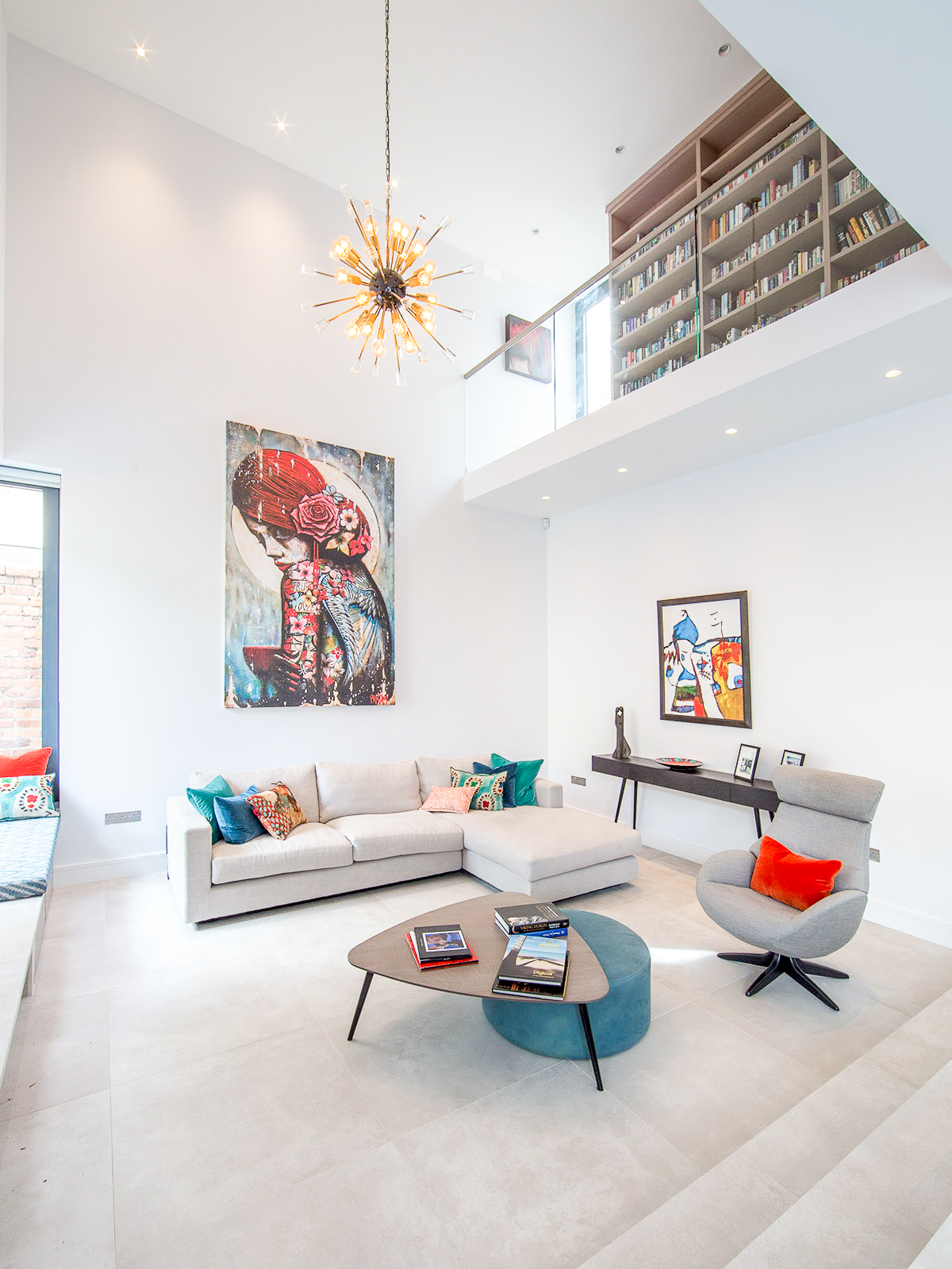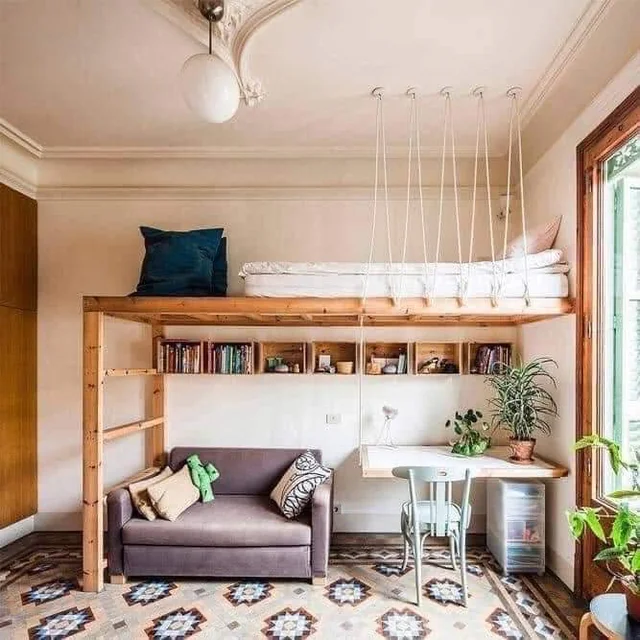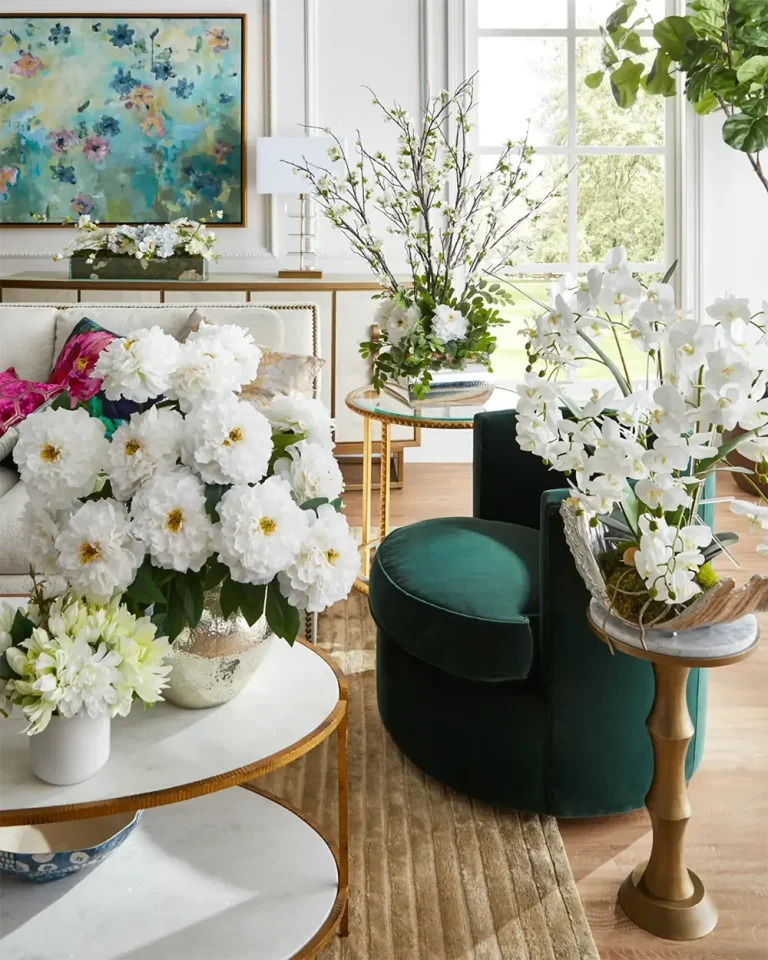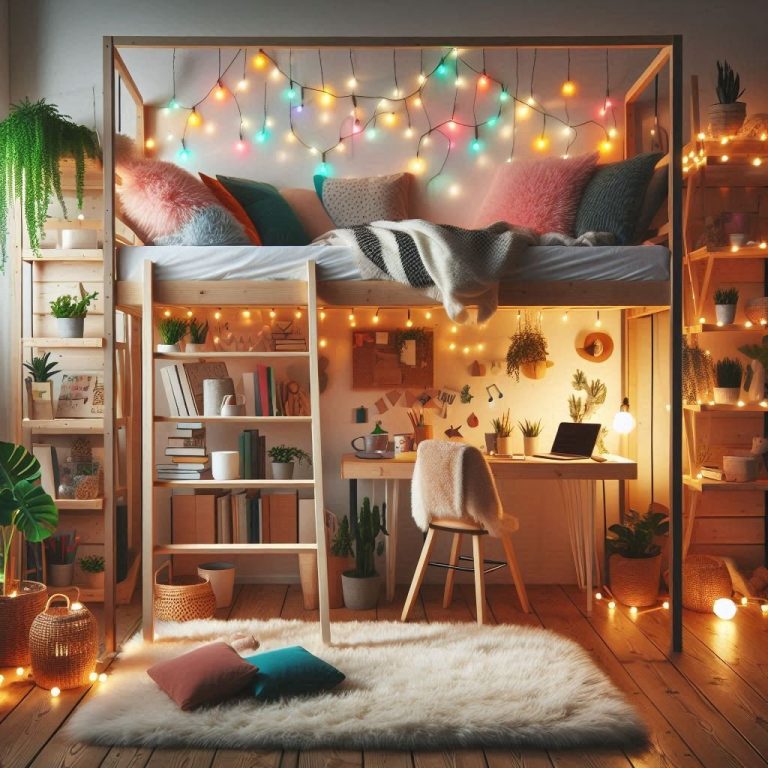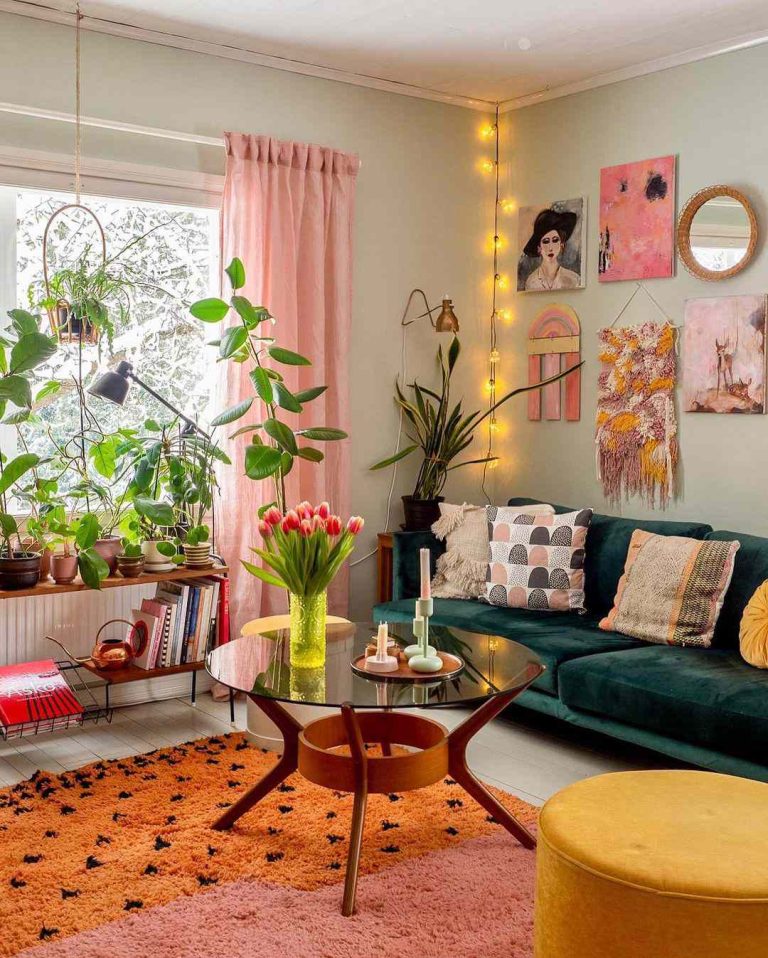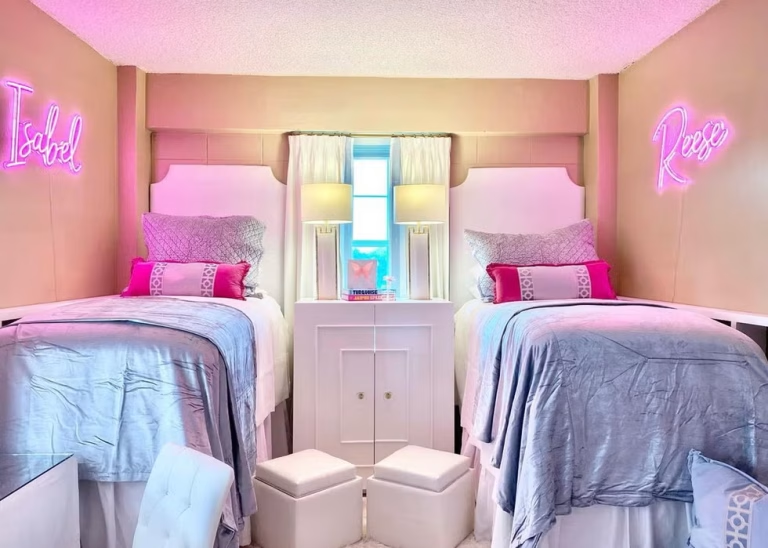19 High Ceiling Living Room Ideas
A high ceiling can transform an ordinary living room into an extraordinary space. It adds a sense of grandeur and openness, creating an airy, spacious feel. But decorating a high-ceiling living room comes with its own set of challenges. You want to make the most of that vertical space while still creating a cozy and functional area.
Here are 19 brilliant high ceiling living room ideas that will help you make the most of your space. Whether you’re looking to create a modern, rustic, or eclectic vibe, these ideas will inspire you to elevate your design game.
1. Create Visual Balance with Large-Scale Furniture
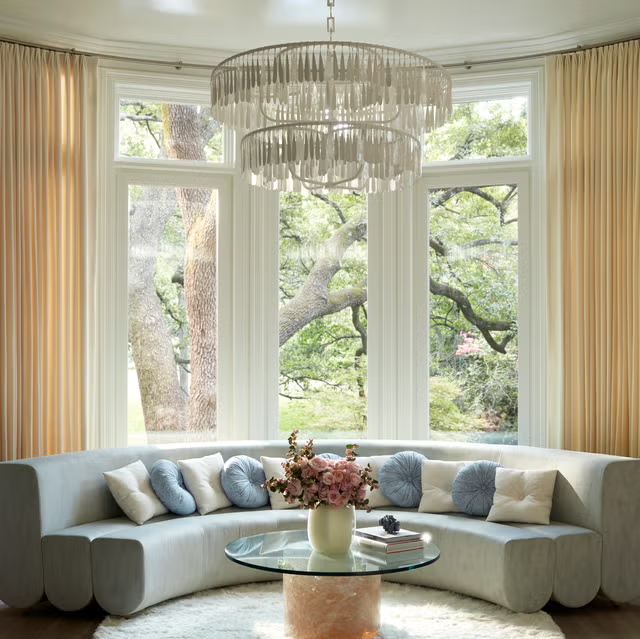
When dealing with high ceilings, it’s essential to choose furniture that can stand up to the scale of the room. Smaller, daintier pieces might look out of place, so opt for large, substantial furniture. Think oversized sofas, armchairs, and coffee tables. These pieces help create a grounded look, preventing the room from feeling top-heavy.
Large-scale furniture also makes a living room feel more inviting, as it adds weight to the space without overwhelming it. To further enhance the visual balance, place the furniture in a way that draws the eye downward, creating a cozy, intimate seating arrangement that contrasts with the room’s height.
This approach works especially well when combined with lower-profile furniture, such as a sectional or oversized armchairs, that anchors the room and emphasizes the spaciousness of the high ceiling without sacrificing comfort.
2. Use Tall Art or Mirrors to Fill Vertical Space
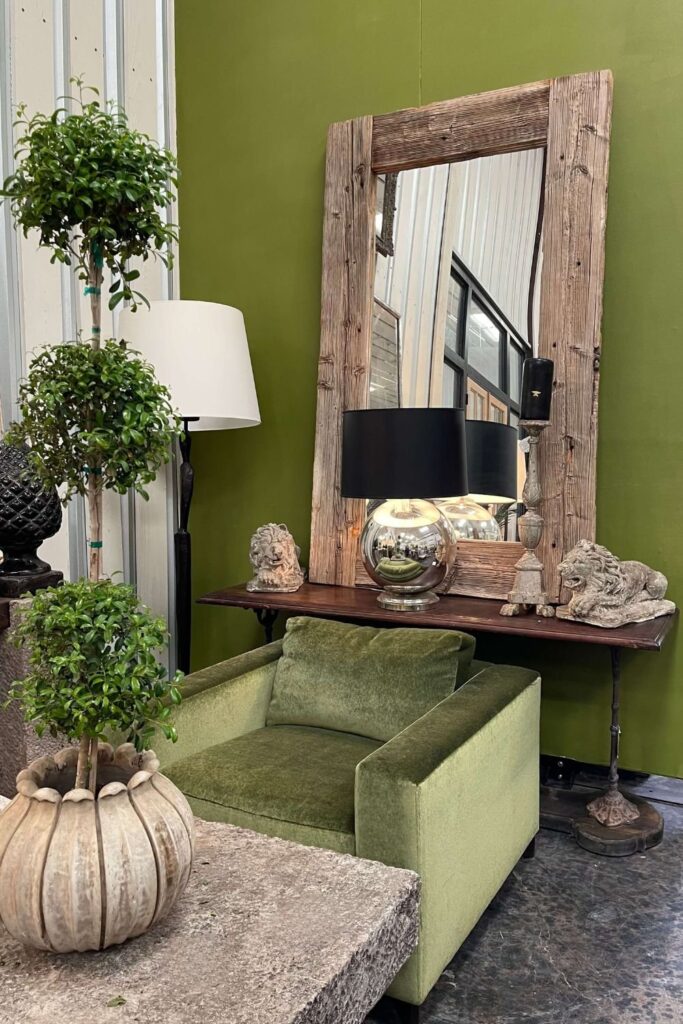
High ceilings create the perfect opportunity to showcase large pieces of artwork or mirrors. When selecting art, choose pieces that have a vertical orientation or are large enough to fill the space without appearing sparse. A tall, statement piece can draw the eye upward, celebrating the room’s height while adding character and style.
Mirrors, especially oversized ones, also work well in high-ceiling living rooms. Not only do they enhance the sense of space and light, but they also reflect the beauty of the room. Whether framed in ornate gold or sleek modern metal, mirrors can transform the ambiance and make the space feel even more expansive.
Consider placing these art pieces or mirrors above the sofa or on a feature wall. This positioning will help create a focal point that directs attention upward, emphasizing the height of the ceiling.
3. Add Statement Lighting Fixtures
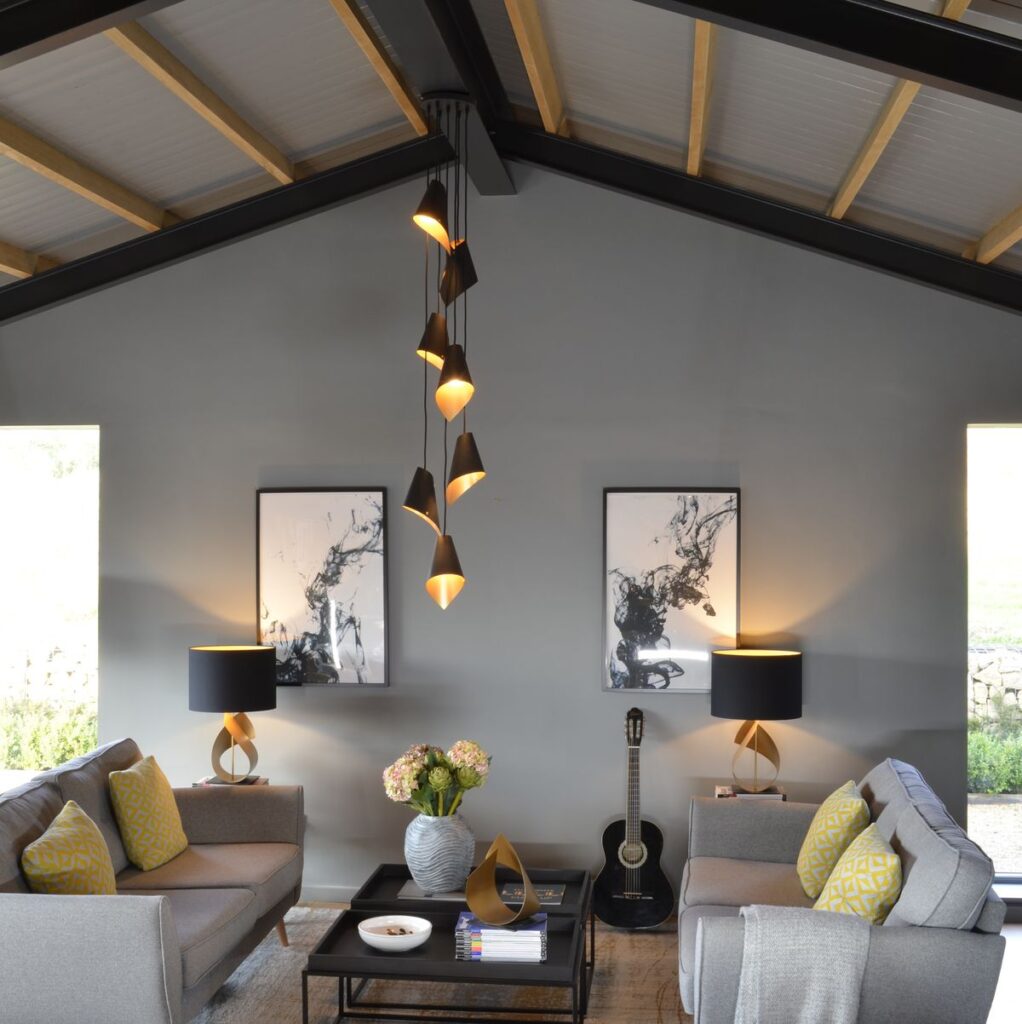
With high ceilings, lighting is a key component in making the room feel balanced and inviting. Statement lighting fixtures, like chandeliers, pendant lights, or oversized floor lamps, are perfect for drawing attention to the ceiling while also offering functional illumination.
A large chandelier or pendant light can become a visual focal point. Opt for something with a dramatic design to make it a standout feature in the room. If you have a modern aesthetic, go for a minimalist light fixture, while for a more traditional or eclectic look, a crystal chandelier or intricate metalwork can be stunning.
To further emphasize the high ceilings, use lighting that cascades down or features adjustable features, so you can direct the light to highlight certain areas of the room. Layering your lighting with table lamps and floor lamps will also provide cozy ambient lighting.
4. Incorporate Vertical Lines
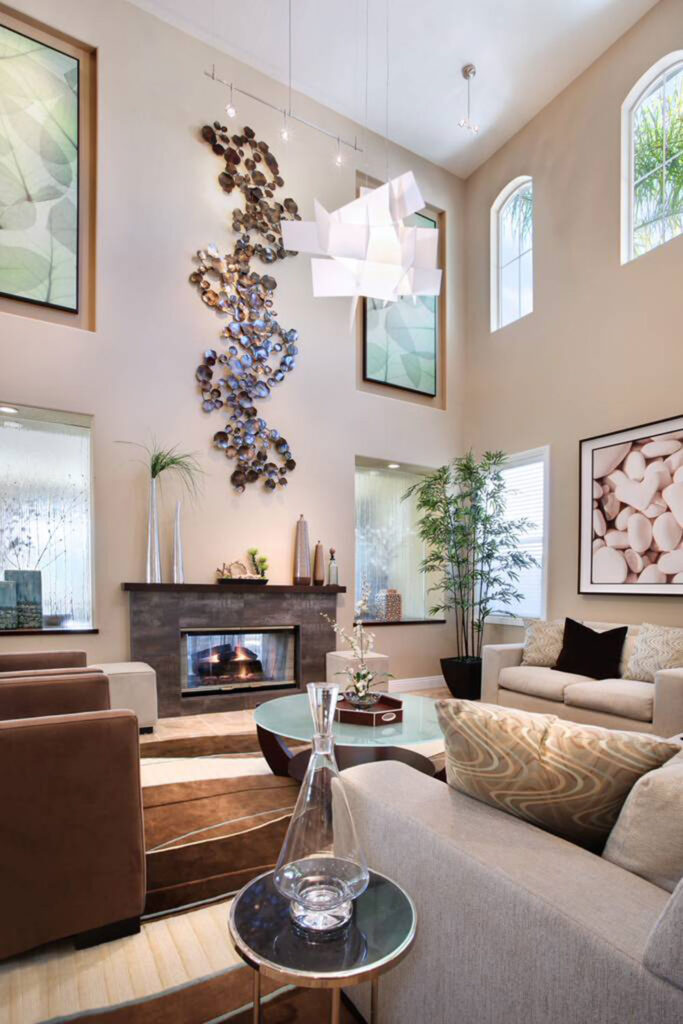
Using vertical lines in your decor can create the illusion of even more height. Vertical lines naturally draw the eye upward, enhancing the feeling of spaciousness in a high-ceiling living room.
Consider incorporating vertical lines through wall treatments, such as tall bookshelves, wallpaper with a vertical pattern, or wood paneling that stretches from floor to ceiling. Even furniture with vertical detailing, like tall shelving units or a statement chair, can add to this effect.
By playing with vertical lines, you can enhance the room’s height while also adding texture and depth to the space.
5. Install a Loft or Mezzanine
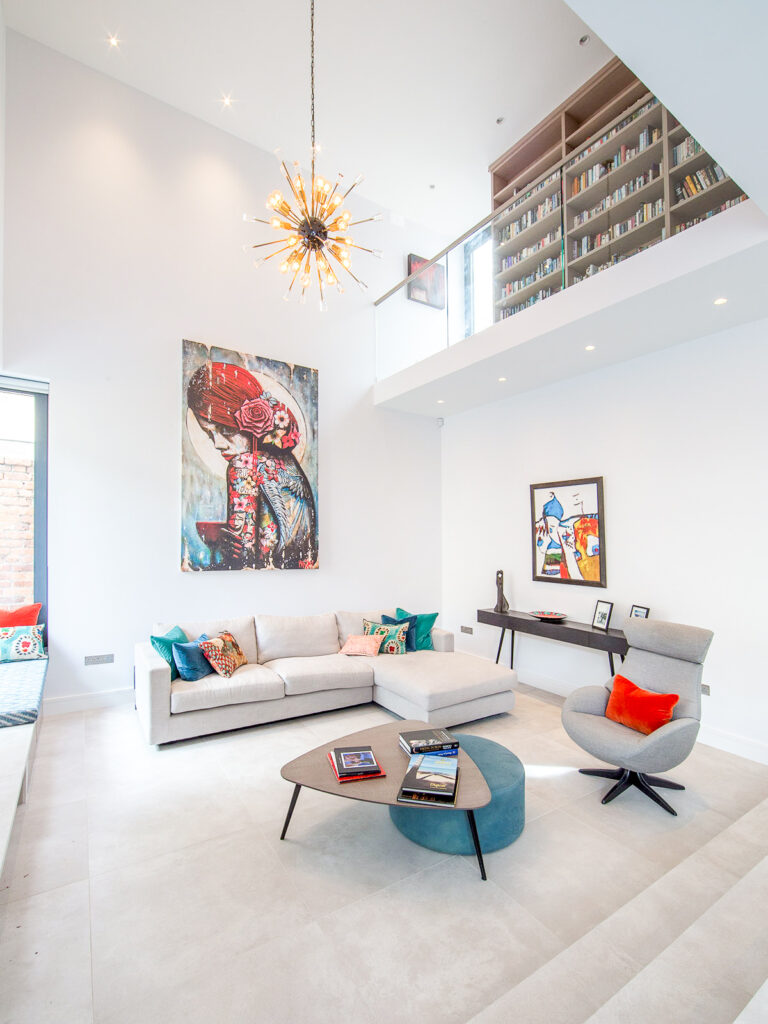
If you have the space and budget, a loft or mezzanine can be an incredible way to maximize your high-ceiling living room. This additional level creates an extra space that can be used for a variety of purposes, from a reading nook to a home office or even a guest room.
A loft takes advantage of the vertical space without making the room feel cluttered. It’s a perfect way to add functionality to the space, especially in open-plan homes where every square foot counts. When designing your loft, ensure that the structure feels integrated with the room by using similar materials or colors to the existing decor.
Make sure to add safety rails if the space will be used by children or pets, and consider making it open so that the room still feels spacious and airy.
6. Choose High-Quality Curtains or Drapes
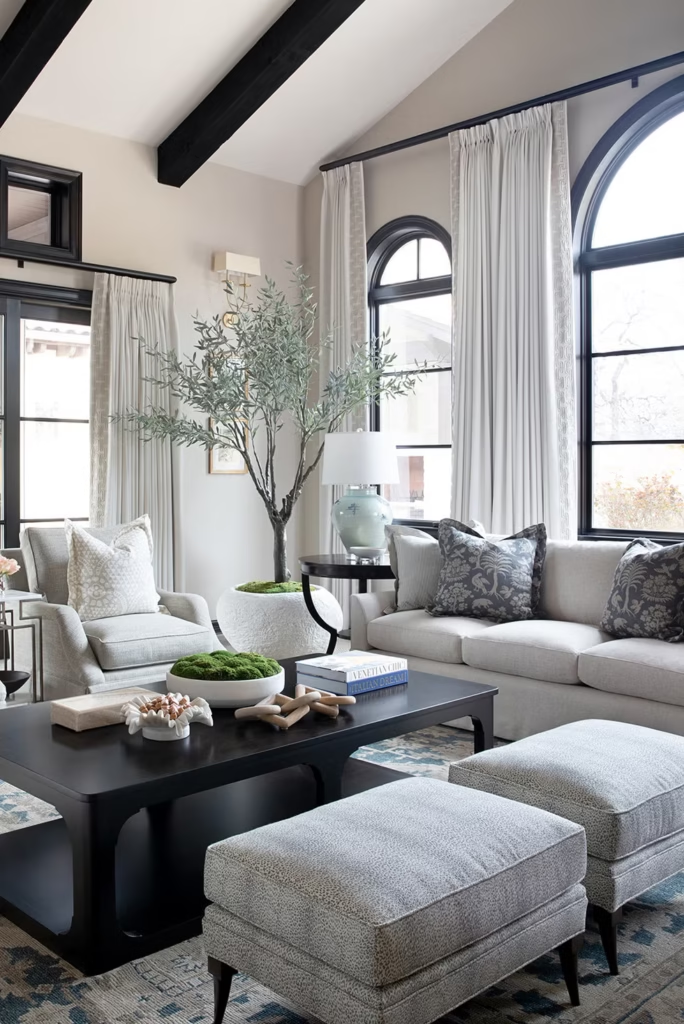
To accentuate your high ceilings, opt for long, luxurious curtains or drapes that reach from the floor to the ceiling. Not only do they help frame the space, but they also emphasize the height of the room. Go for materials like velvet or silk that add texture and elegance.
When choosing curtain rods, pick long ones that extend beyond the window frame to give the illusion of even taller windows. This simple trick can make a dramatic difference in the overall look of the room, adding sophistication while also maintaining the airy, spacious feel.
Heavy curtains can also help insulate the room, controlling temperature and noise levels, while sheer fabrics allow light to filter in while still providing privacy.
7. Play with Color and Paint Techniques

The color palette you choose for a high-ceiling living room can significantly impact how the room feels. Dark colors on the walls and ceiling can make the space feel cozier, while lighter shades can enhance the sense of height and openness.
For a dramatic look, consider painting the ceiling a darker shade, like charcoal or navy, to create the illusion of a lower ceiling. On the other hand, painting the walls in light neutrals, soft pastels, or whites will make the space feel even more expansive and airy.
Additionally, incorporating paint techniques such as accent walls or ombré effects can create visual interest and define different zones in the room. Use paint to create a visual flow between the ceiling, walls, and furniture, or add geometric patterns that draw the eye upward.
8. Create a Focal Point with a Large Fireplace
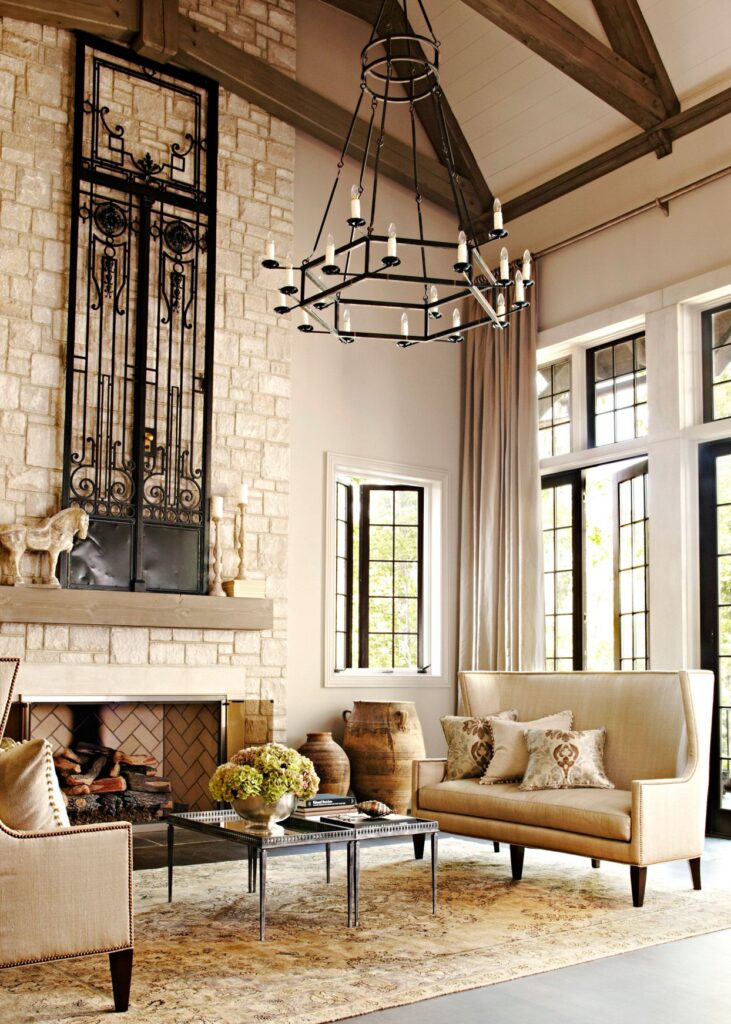
A fireplace can be the perfect anchor for a high-ceiling living room. Not only does it add warmth and charm, but a large fireplace or a dramatic hearth can be the focal point that grounds the space.
Consider installing a tall, sleek fireplace that extends from the floor to the ceiling. This creates an impressive feature that pulls attention away from the height of the room and draws it toward the center. For a rustic feel, you can choose a stone or brick fireplace, while a more modern design might feature a minimalist, clean-lined look.
If you have a traditional fireplace, complement it with a large mantelpiece to house family photos, artwork, or seasonal decorations, which further personalize the space.
9. Add an Indoor Tree or Large Plants
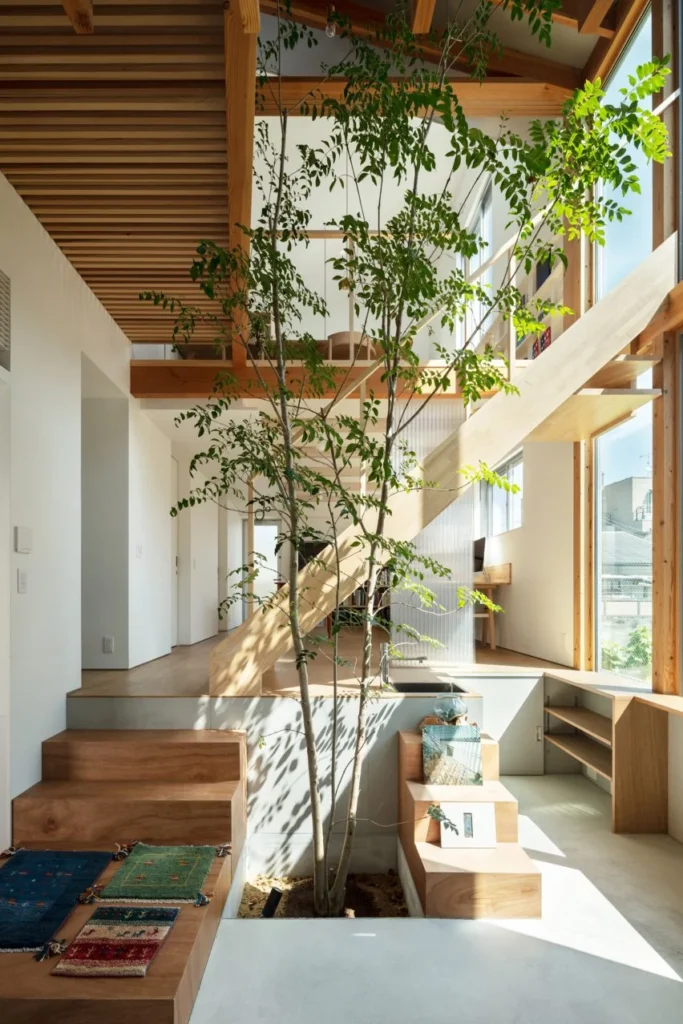
Indoor plants can help soften the space while bringing the outdoors in. Large trees or oversized plants make the most of your room’s verticality. Place a tall plant, like a fiddle leaf fig, rubber tree, or palm, in the corner of the room to balance out the space and add a natural element.
Large plants also improve air quality and can bring color and texture to your decor. For a more dramatic effect, create a vertical garden or arrange smaller plants in tall planters around the room to draw the eye upward.
These living elements bring a calming and organic vibe to the space, making your high-ceiling living room feel more inviting and connected to nature.
10. Consider Open Shelving or Floating Shelves
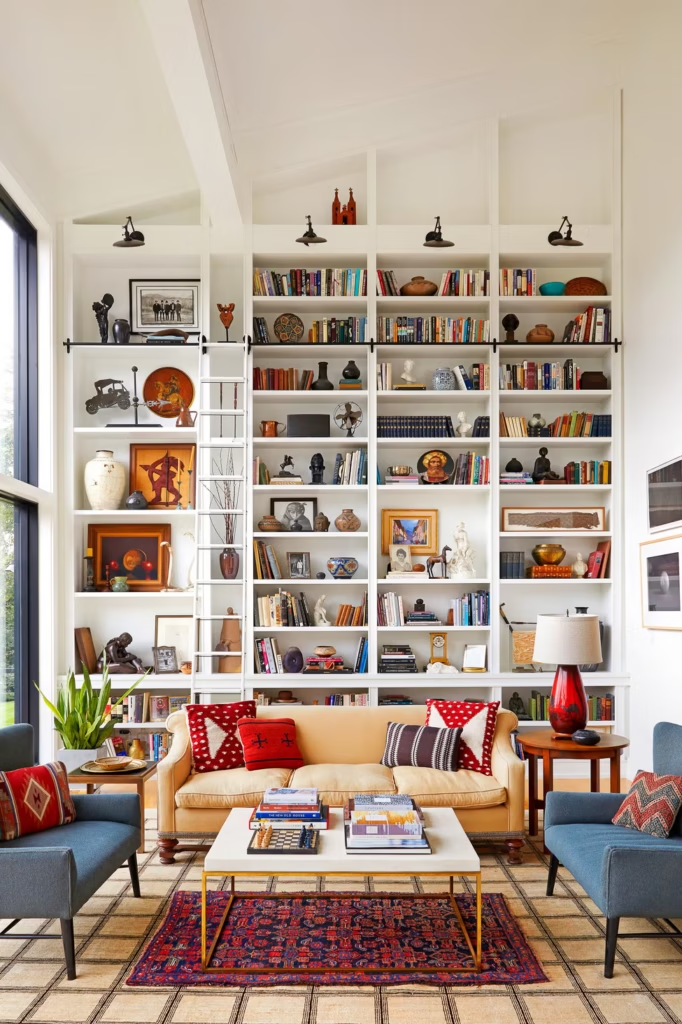
Open shelving or floating shelves are perfect for adding functional storage and visual interest in a high-ceiling living room. Instead of bulky cabinets, floating shelves provide a clean, open look while allowing you to display books, art, and other decorative objects.
The beauty of open shelving is that it can be customized to fit the proportions of the room. You can install shelves at different heights, even extending them to the ceiling, to create a built-in look. This allows you to fill the vertical space without overwhelming the room with bulky furniture.
Floating shelves are also a great way to display personal collections, framed photographs, or decorative objects that add character to your high-ceiling living room.
11. Incorporate a Feature Wall
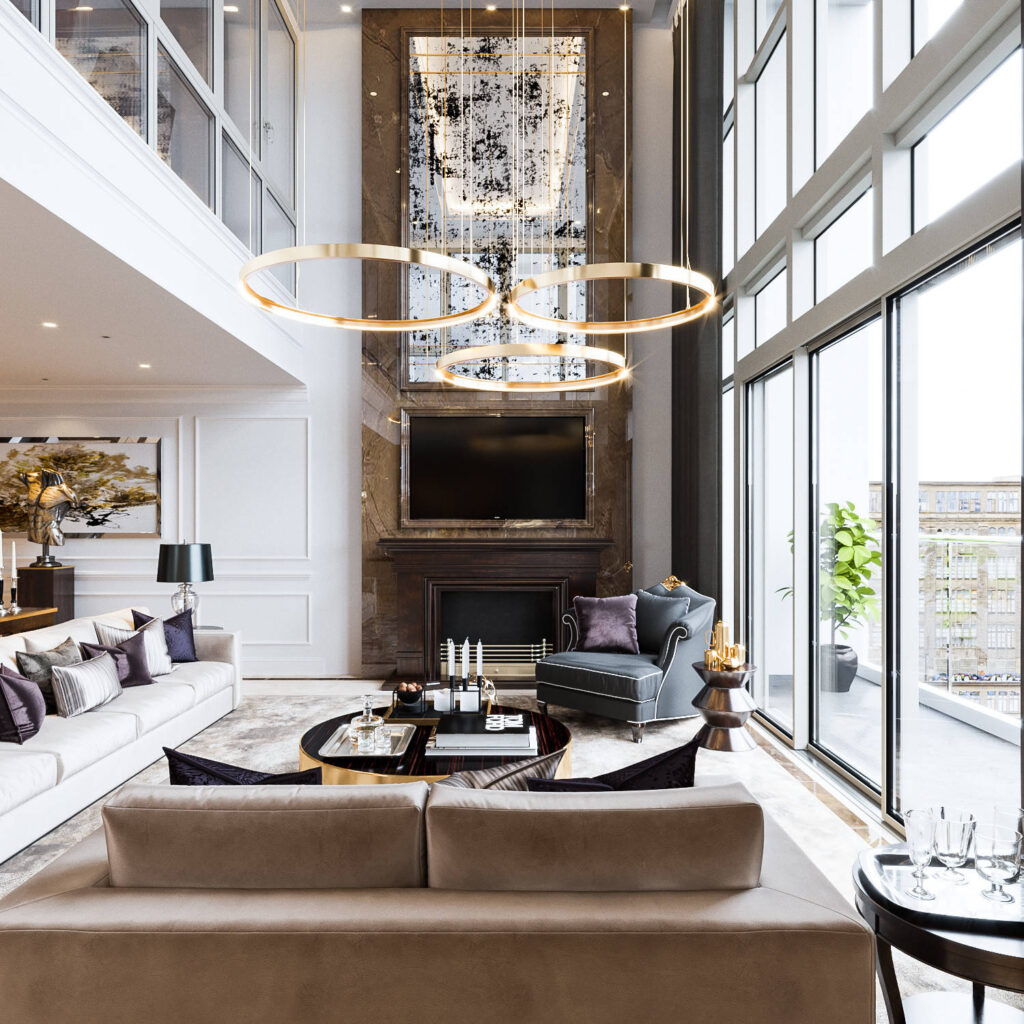
A feature wall is a fantastic way to bring focus and depth to your high-ceiling living room. This can be achieved through paint, wallpaper, or textured materials. By creating a standout wall, you draw attention away from the height of the ceiling and toward the horizontal elements of the room.
One popular approach is to choose a bold, rich color or an eye-catching wallpaper pattern for the wall behind the sofa or entertainment area. If you prefer something more natural, consider wood paneling or exposed brick, which adds texture and warmth to the space.
This technique not only gives the room more visual interest but also serves to create a grounding element that helps balance the vertical proportions of the room. A feature wall works especially well when combined with furniture arrangements that complement the focal point.
12. Add a Rug with Bold Patterns
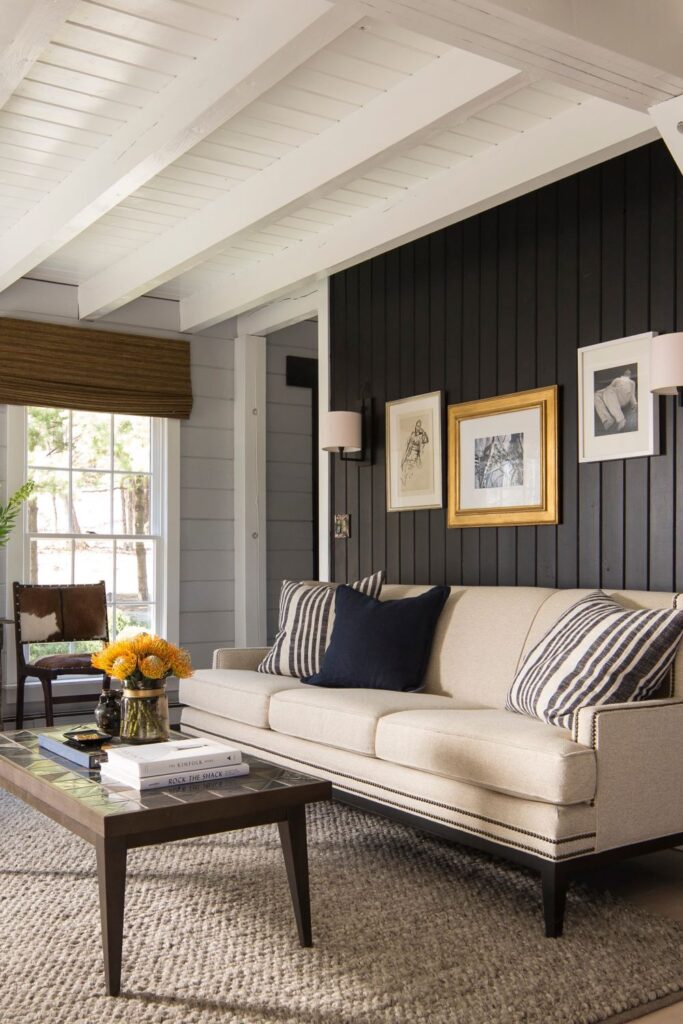
In a high-ceiling living room, it’s easy for the space to feel a bit “cold” or distant. Adding a rug with a bold pattern can instantly warm up the room and bring a sense of coziness to the area. Large rugs with intricate designs or bright colors can contrast beautifully with the vastness of the room, giving it a more intimate and inviting feel.
When choosing a rug, consider the overall style of the room. A large, textured rug can add dimension to a minimalist space, while a patterned rug might be perfect for an eclectic or boho-inspired living room. Position the rug so that it grounds your seating area and complements the furniture arrangement.
Not only does a rug provide comfort underfoot, but it also helps define the space, particularly in open-plan homes where boundaries between different areas are less defined.
13. Utilize Built-in Furniture for Streamlined Design
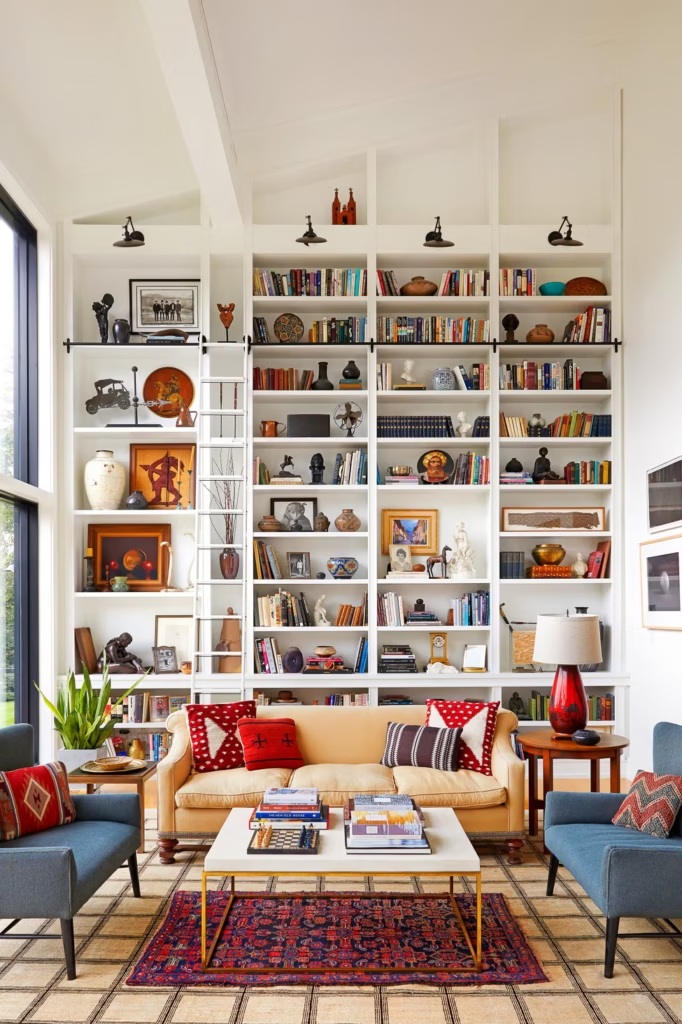
Built-in furniture is an excellent solution for a high-ceiling living room as it allows you to maximize your space without taking away from the room’s openness. Built-in bookshelves, seating areas, or even desks can be designed to fit the room’s scale, offering both functionality and seamless integration into the overall aesthetic.
This type of furniture blends well with the architecture of the room and doesn’t overwhelm the space with unnecessary pieces. For instance, a built-in entertainment center or custom shelving along the walls can help manage storage and organization while maintaining the room’s sleek, clean lines.
If you have large, open walls, built-in furniture can also break up the emptiness, filling the vertical space with storage or style elements that complement the room’s design.
14. Opt for Skylights to Bring in Natural Light
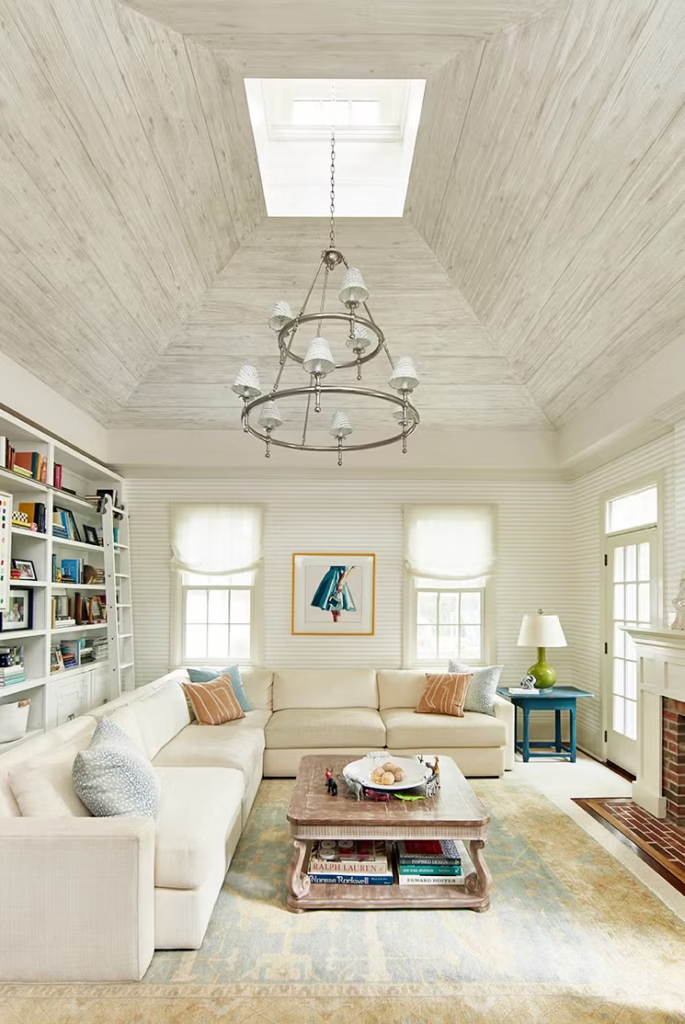
Skylights are a fantastic way to capitalize on high ceilings while allowing natural light to flood the room. Installing skylights or large windows in the roof not only brightens the space but also enhances the overall airy feel of the room. They also offer beautiful views of the sky and surrounding landscape, making the space feel more connected to the outdoors.
Skylights come in various styles, from fixed to opening windows that allow ventilation. The type of skylight you choose can depend on your climate and how much natural light you want. When positioned correctly, skylights can also highlight specific features of the room, such as a piece of artwork or a large plant.
In addition to their beauty, skylights also promote energy efficiency by reducing the need for artificial lighting during the day.
15. Create Zones with Different Floor Levels
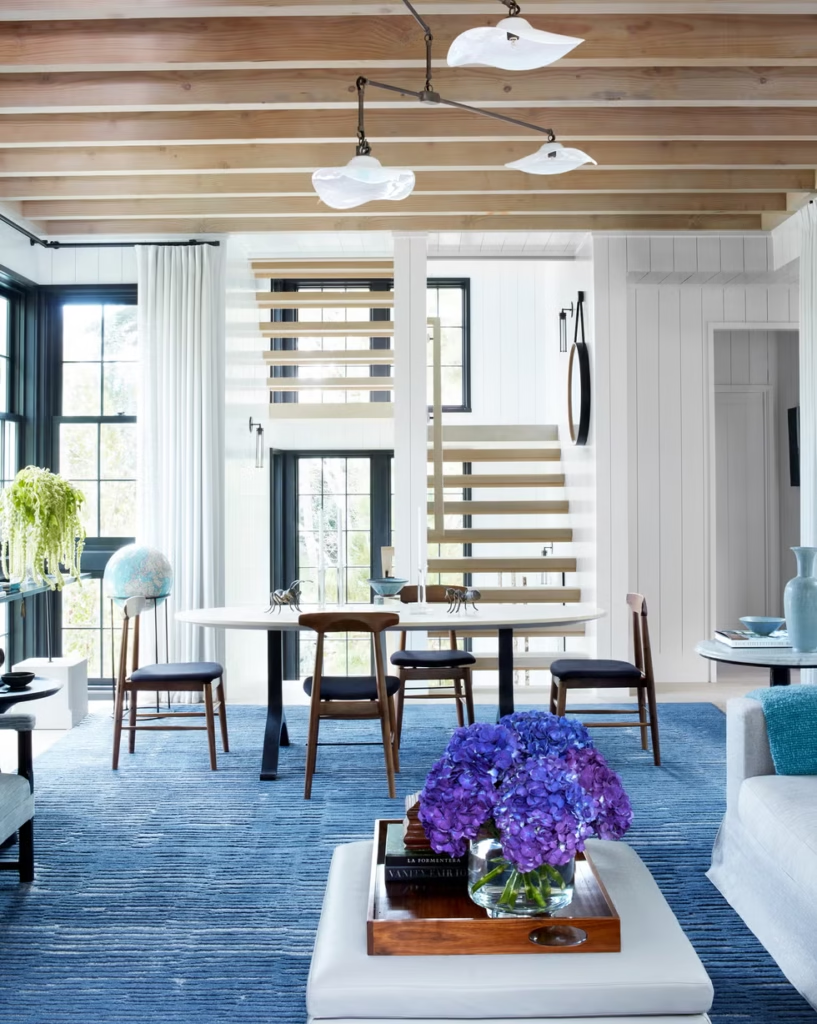
If your living room is particularly spacious, consider creating different zones by varying the floor levels. This works exceptionally well in high-ceiling spaces, as it allows you to break up the vast area and make it feel more intimate and usable.
You can create a sunken seating area or a raised platform for a reading nook or entertainment zone. This not only defines different areas within the room but also adds architectural interest and helps balance the room’s proportions.
By introducing different floor levels, you’re able to maintain the openness of the space while introducing a sense of structure and function.
16. Use Large-Scale Plants to Define Space
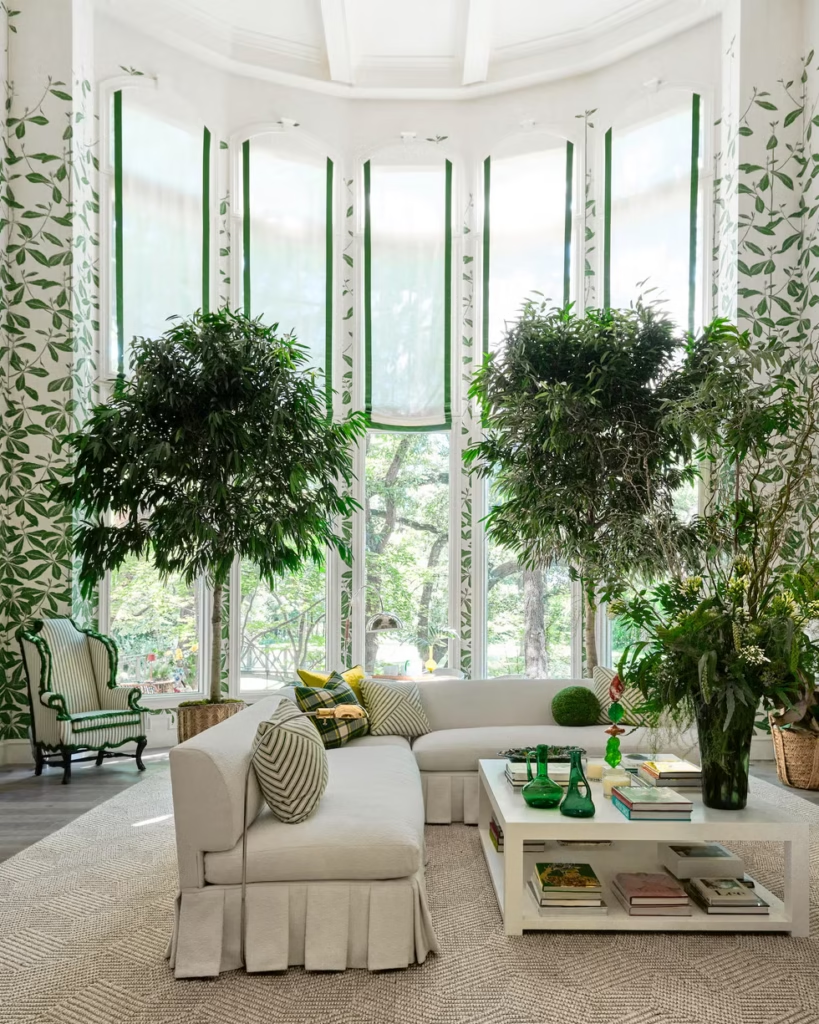
Incorporating large plants in strategic areas of your high-ceiling living room can do wonders for both aesthetics and function. When you introduce taller plants, they not only fill vertical space but also help break up the room into smaller, more defined sections.
Place tall indoor trees or potted plants in corners or near windows to draw attention away from the height of the ceiling and to other focal points within the room. Large plants, like palms, ficus trees, or even climbing vines, add color and texture, transforming a vast, open area into a cozy, nature-filled retreat.
Additionally, plants can soften the lines of the room, balancing the sleekness of modern furniture with the organic beauty of living greenery.
17. Add Architectural Details Like Beams or Columns
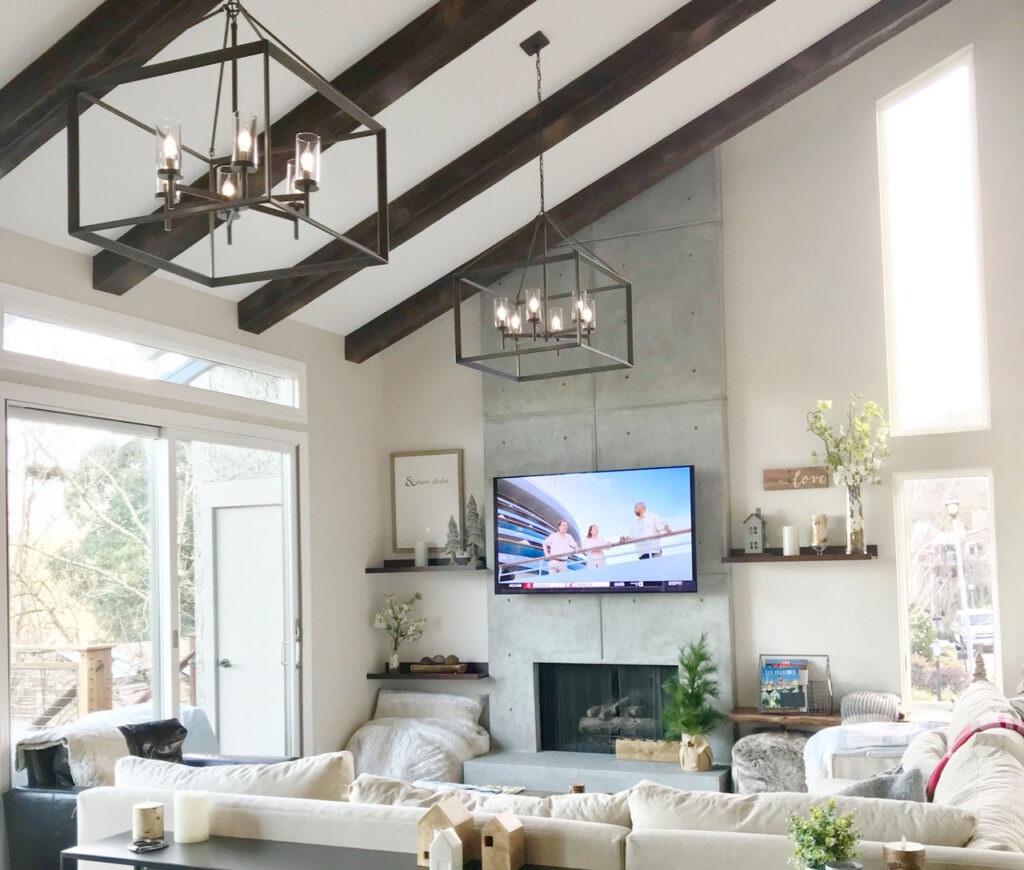
Exposed beams or columns are a timeless way to highlight the height of a room and add character. Whether they are made of wood, steel, or stone, these architectural elements can transform a simple living room into a grand space that feels cohesive and thoughtfully designed.
For a rustic or farmhouse-inspired living room, wooden beams across the ceiling can give the room an earthy, inviting feel. If you prefer a more modern or industrial look, steel or concrete beams may suit your style better. Similarly, adding columns can create a sense of symmetry and structure, making the space feel grounded and balanced.
Architectural details like beams and columns not only add visual appeal but also enhance the overall design by breaking up large expanses of walls and ceilings.
18. Play with Scale and Proportion in Furniture Arrangement
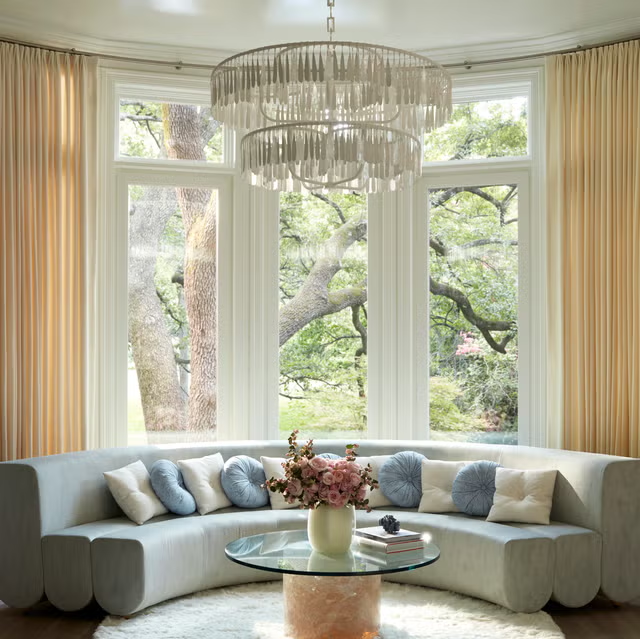
In a high-ceiling living room, furniture arrangement can make a huge difference in how the space feels. One of the most effective ways to address the proportions of the room is by experimenting with the scale of the furniture and how it’s arranged.
Use larger pieces, such as oversized sofas or tall bookshelves, to anchor the space and balance the vertical elements of the room. Place furniture in a way that draws attention downward, creating a more intimate atmosphere. For instance, center the seating area in a way that doesn’t place all the attention on the ceiling.
Layering smaller furniture pieces around larger items and positioning them in ways that mimic the room’s proportions can help make the space feel more cohesive and less overwhelming.
19. Create a Multi-Functional Space with a Lofted Area
If your living room has a particularly high ceiling, why not consider creating a multi-functional space by adding a lofted area? This additional level can be used for a variety of purposes: a second sitting area, a reading nook, a home office, or even a sleeping area.
Lofts are especially great in open-plan homes, where you might want to separate different areas without building full walls. By incorporating a loft, you’re able to make the most of the room’s height while also adding usable square footage.
The key to designing a loft is ensuring that it complements the existing room without overwhelming the space. Keep the design open and airy to maintain the feeling of expansiveness, while integrating smart storage solutions to maximize functionality.
Conclusion
Designing a high-ceiling living room presents both opportunities and challenges. The height of the space can create a sense of openness and grandeur, but it can also make the room feel distant or unbalanced if not styled thoughtfully. By using these 19 ideas, from adding statement lighting and vertical lines to incorporating large-scale furniture and art, you can create a space that is both stunning and functional.
Remember, the goal is to balance the vertical proportions with the overall comfort and coziness of the room. Whether you choose to play with color, introduce architectural elements like beams, or add large plants to define the space, the key is to enhance the height while maintaining a warm, inviting atmosphere.
With the right furniture, lighting, and design choices, your high-ceiling living room can become a spectacular, well-balanced space that perfectly suits your lifestyle and aesthetic preferences.

